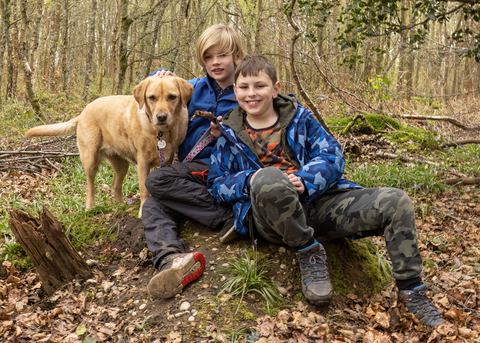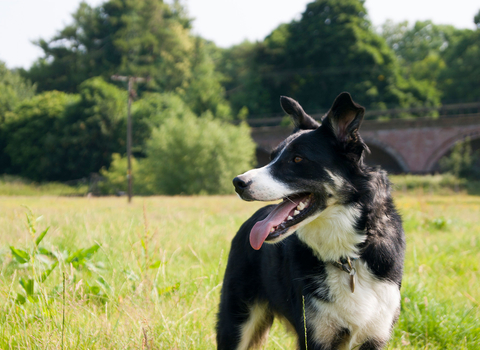Dogs welcome
The Trust allows dogs to be walked on most of our nature reserves
We ask that owners keep dogs on a lead or under close control when visiting the sites we manage for the benefit of wildlife and other visitors. Some seasonal restrictions also apply at certain sites.
Dog walking FAQ
If you would like to walk your dog on the sites we manage, please read the information below before you go.
Bird nesting season (March-August)
In order to protect ground nesting birds from disturbance, we ask that dogs be kept on a lead on our heathland sites from February to August. Site notices will also be in place to help remind visitors.
Dog poo
What to do about your dog’s poo when walking in the countryside can be confusing for owners. Signs in different areas can give different instructions and many dog owners think that dog poo is ‘natural’ anyway and that they can just leave it.
Health risks
Cleaning up after your dog prevents others from getting faeces on their feet, hands or clothing, or in the wheels of wheelchairs and pushchairs. This is not just unpleasant – dog faeces can cause serious diseases in humans such as Canine Toxocariasis, which can lead to blindness.
Dog poo also takes some time to biodegrade and the unsightly mess is around long after their visit for others to experience.
Pick it up for wildlife
Wildflowers and plants need low nutrient soil to thrive. Soils enriched with dog faeces encourage the growth of coarser plants such as nettles and thistles, which compete with and outgrow many wildflowers.
Pick it up for people
Nature reserves are used by all kinds of different people including children, wheelchair users and volunteers, who are often working to improve wildlife in areas on and near the footpaths.
Pick it up for livestock
Dog poo can cause serious disease in domestic livestock. Neosporosis can cause abortion in cattle; Sarcocystosis can cause neurological disease and death in sheep.
Dogs and livestock
Livestock graze many of our nature reserves as part of our management work. In extreme cases worrying and death of livestock can occur.
Please follow these simple rules when walking your dog near livestock on our sites:
- Never allow your dog to chase / frighten livestock or wildlife.
- Keep your dog close to you, in sight and/or on a lead when visiting an area with livestock.
- Avoid walking amongst cattle wherever possible.
- If cattle chase you and your dog, it is safer to let go of your dogs lead. A dog free from its lead is likely to be able to escape cattle.
IN THE CASE OF AN EMERGENCY or if you are concerned about any of our animals, please contact the grazing team 24hr emergency number on 07817 769 672
Flea treatments & river pollution
Many flea treatments contain neonicotinoids and other highly toxic insecticides used on cats and dogs. Studies have found concerning levels of insecticides in our rivers and waterbodies, which may be having significant negative impacts on aquatic insects.
We ask that whenever possible, you do not allow your dog to enter streams, rivers and other waterbodies on the nature reserves that we manage, in order to help protect these important habitats.
Potential threats & hazards to dogs
From venomous Adders to poisonous fungi, certain plants and animals, as well as disease carrying parasites, are all things that dog owners should be aware of when walking their pets in the countryside.
We recommend that you keep your dog under effective control and in sight at all times to minimise the risk to your pet, wildlife and other site users. Where signage requests that you to do so, we ask that you walk your dog on a lead.
Practical advice for safe dog walking and potential health threats can be found on the Kennel Club's website.
Further reading

© Jon Hawkins - Surrey Hills Photography

